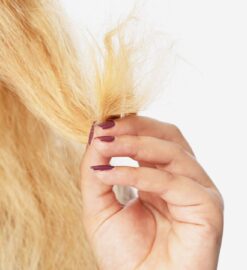Basic Care With The Microscope

As most of the microscopes in laboratories or research centers are of the “Standard” type, we have separated below some essential tips related to this model, including cleaning, storage, and other precautions.
If the microscope you use is not of the “Standard” type, specialists’ assistance is recommended to carry out the tips below, given that fundamental differences may exist between the models.
Cleaning microscopes is very thorough and requires specific care.
Cleaning
As the optical part of the microscope depends on its most perfect functioning, its cleaning must be carried out cautiously. Below, the materials that can be used in the cleaning process:
- Cotton
- Cleaning solution, consisting of 50% PA sulfuric ether, 50% PA chloroform
- Sprinkler
- Homemade cotton swab
- Clean, lint-free cloths and soft fabric
The cleaning process of microscope and microscopy accessories is started by first cleaning the windows and mirrors on the base, then the lamp until you reach the eyepieces. If you notice the presence of fungi, use hydrogen peroxide ten volumes.
To clean the grease stains, present on the lenses, perform the same procedure as above, using the cleaning solution. Acrylic or plastic lenses and filters cannot be cleaned with the solution described above. Thus, ethyl alcohol is used.
It is worth noting that, to avoid dust deposits, the parts disassembled during the cleaning work must be left on clean cloths.
Storage
When not in use, the microscope must receive special care to prevent the formation of fungi. The best option is to keep it in an air-conditioned environment.
If this is not possible, a box specially produced in acrylic or wood, with openings for air circulation, and an internal socket with a lamp are the best indications. Please note that the lamp must remain on while the microscope is inside the box.
How to clean the glasses of a microscope
- Wash Your Hands Well
Before starting the eyeglass cleaning process, make sure your hands are clean and dry. Also, ensure that there is no product residue such as moisturizer or perfume. They can react with the coating on your lens (such as UV or scratch protection) and harm it.
- Run The Lenses In Running Water
Now that you have clean hands, first, rinse the lenses under the tap. This process helps to remove excess dust that can scratch the lens when washing. Do not use hot water to avoid the risk of damaging the coating of the glasses.
- Apply Soap Neutral
Here you have to be very careful. Do not use products that contain perfume or moisturizing lotion; always prefer neutral ones. It is also not necessary to use a lot since the soap is concentrated. For those who travel, it is interesting to purchase their lens cleaning spray. It will be helpful in case you don’t have a faucet or neutral soap available. Just be sure to check which spray is suitable for your type of coating – not all of them can be used in anti-reflective lenses, for example. Do not use alcohol or detergents based on citrus fruits. This can damage the lenses.
- Rinse Gently
Rub the lenses over the entire surface of your glasses. Don’t forget to remove the residue from the part between the rim and the lens, the perfect place to collect dust. The nose’s support, which usually accumulates oil from the skin, should also not be ignored. Try to make circular movements with care. In some more difficult corners to reach, the tip is to use a toothbrush, but be very careful not to touch the lenses and scratch them.



